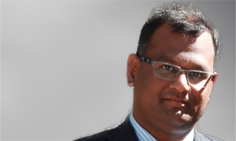“NOTHING is more difficult, and therefore more precious, than to be able to decide,” declared Napoleon Bonaparte.
A donkey which is extremely thirsty and extremely hungry at the same time, kept perfectly equidistant from a bucket of water and a bale of hay, will be unable to decide what it wants and eventually will die of indecisiveness. This is the famous thought experiment proposed by the French philosopher Jean Buridan (c. 1295–1363).
Although we place much emphasis on evidence-based medicine and the application of the evidence to clinical decision making, the value of such evidence in the actual decision-making process appears unclear in certain situations.
Such a situation arises, for instance, when some studies conclude that there is neither benefit nor harm in a particular treatment. There is no answer to whether increasing the sample size to encompass the whole of humanity and prolonging the duration of the observation to infinity will make every study reach an ambivalent conclusion. But, such a danger with an evidence-based approach appears nevertheless probable in a hypothetical world.
That brings us to real-world day-to-day clinical encounters where we have to weigh the benefits and risks of a proposed intervention (or non-intervention) when evidence puts us exactly mid-point between the bucket of water and the bale of hay.
The colloquialisms “50-50 chance”, “between a rock and a hard place” and “damned if I do, damned if I don’t” all characterise this situation. As beautifully as these phrases describe the situation, they do not offer even a minuscule solution to the problem.
If we must strictly base our decisions on evidence and evidence alone, in such situations where evidence is inconclusive, the indecisiveness could paralyse us and cause harm to the patients. But, we do decide.
“Flip a coin” or “take a pick” are two solutions frequently employed. It is to be noted that they are fundamentally different approaches.
For the “flip a coin” strategy we invoke the natural world’s randomness. But, for the “take a pick” strategy we rely on our fundamental freedom (without any reasoning). Of note, the random pick by flipping the coin may not be the same as free choice.
Evidence might justify either one of those choices as equally wrong or equally right. But, per se, evidence does not make them either right or wrong.
Now comes the second question – how do we say which option was “right” and which was “wrong” without seeing the outcome?
Without delving into the discussion of what constitutes right and wrong, it appears to me that because we chose it, the chosen option becomes “right”. That applies not only for that individual situation but for humanity to follow in every other situation.
That way, exercising our freedom, “take a pick” always becomes the “right” choice, whereas the outcome of “flip a coin” needs to be attested by us individuals as our choice before it can become “right”.
For this same reason, a computer-based decision-making system can never be “right” in its own accord. Whatever decision the machine makes, it has to be “chosen” by us before it becomes “right”. That is not to infer that we should strive to opt for the “right” choice always.
Food for thought.
Dr Balaji Bikshandi is an intensivist based in Canberra and an inventor attached to the Department of Industrial Design at the University of Canberra.

 more_vert
more_vert
I’d be interested to know whether the following approach has any demonstrable validity: If you can’t decide logically, just make a decision one way or another, then sleep on it. If it feels wrong the next day, change your mind to the other option.